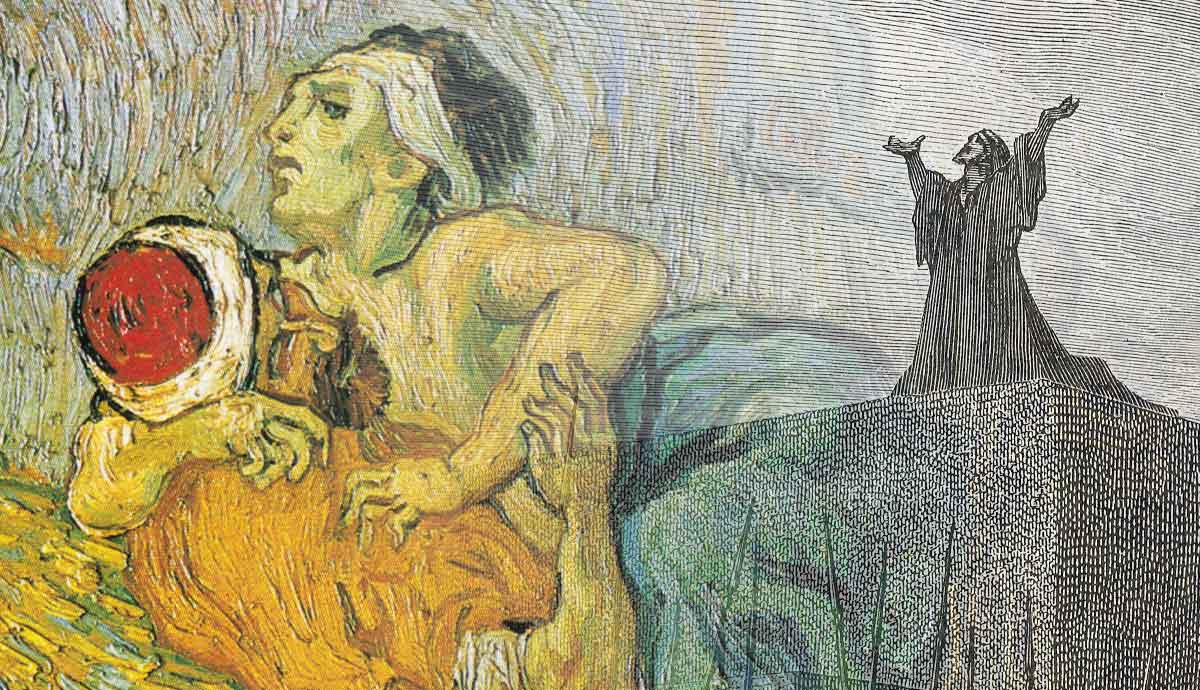
Perhaps the most famous Samaritan is one who never existed—the “Good Samaritan” from a fictional story Jesus tells in the fifteenth chapter of the Gospel of Luke. But the Samaritans were and are a real ethno-religious group whose history spans millennia. Like Jews, Samaritans claim to be the descendants of the ancient Israelites.
Where Do Samaritans Get Their Name?

The Bible presents David and Solomon’s reigns as a golden age in Israel’s history due to David’s military might and Solomon’s political acumen. Solomon’s heir, Rehoboam, however, lacked his father’s abilities and, upon taking the throne, failed to negotiate an agreement with disgruntled workers in Israel’s northern half. This precipitated a divide between the northern kingdom, which came to be called simply (if confusingly) “Israel,” and the southern Kingdom of Judah. This divide never healed.
Jeroboam, the first king of the newly-separated Kingdom of Israel, established Shechem as his capital. Later, the capital was moved to Tirzah and then, finally, King Omri moved it to Samaria where it remained until it was conquered by the Assyrians in 722 BCE.
The Assyrians reportedly forced large numbers of Israelites to move to various locations already under Assyrian rule, and in turn forced other subjugated peoples to repopulate Samaria’s environs. This “mixed” population of northern Israel would eventually be called the Samaritans.
How Does the Bible Tell the Samaritan Story?

Because the Bible does not tell the story systematically, piecing together a Samaritan history from biblical material requires relating key events with their social fallouts. While Assyria successfully conquered Samaria, they failed ultimately to overcome Jerusalem. It was not until the year 586 BCE that the Kingdom of Judah experienced exile under the Babylonians. In contrast to the Assyrian policy, the Babylonians preferred not to forcibly move large, indiscriminate populations of people from one place to another. Instead, they selected particular people and groups who would be of special value to the empire and brought them to Babylon.
While the ethnic label “Jew” can refer to any person descended from any of the twelve tribes of Israel today, the term itself exists due to the distinct exilic experience of the Judahites, from whose name the term is derived.
Why Did Prejudice Develop Between Jews and Samaritans?

Jeroboam established an alternative religion for his newly-established realm in order to discourage his subjects from traveling frequently to Jerusalem to worship at the Temple. While Israelites in the Kingdom of Judah looked down on these spurious practices, the status of northern Israelites as their true kin was never questioned.
However, this religious prejudice began to acquire an ethnic color when many formerly-exiled Jews, sponsored by the Achaemenid Empire, returned to Jerusalem to rebuild its walls and Temple, which the Babylonians had destroyed. Apparently, tensions arose when these returning exiles discovered that local Israelites had been intermarrying with populations that had emigrated—in many cases forcibly—to Israel from elsewhere. Though intermarriage with neighboring nations had been common throughout Israel’s history, this practice was deeply offensive to those who had worked relentlessly to preserve their national distinctiveness in a foreign land.

While the term “Samaritan” would not be used in an ethno-religious sense until later, the tensions between this supposedly “mixed” population and the Jews returning from exile emerges starkly in the biblical books of Ezra and Nehemiah. While a resolution is presented in these books, history both ancient and modern suggest that the division continued to widen.
How Do Samaritans Tell Their Own Story?

The Samaritan version of their own story sees the source of their division from Jews appearing even before David and Solomon. According to the biblical telling, the first place where the Israelites set up their movable center of worship, the Tabernacle, after entering the land of Israel was at Shiloh, located in the north of the modern-day West Bank. Samaritans, however, believe that this sanctuary was first erected north of Shiloh on a mountain called Gerizim, where Moses had commanded the Israelites to ratify their covenant with God.
Once established at Gerizim, Samaritans believe that the Tabernacle should never have been moved elsewhere. Thus, when the Bible reports that it was moved to Shiloh and then to Jerusalem, Samaritans see this as a departure from God’s command. Faithful Israelites, Samaritans claim, continued to worship at Gerizim after this happened, and this group of faithful Israelites later came to be called Samaritans by outsiders.
Did Jews and Samaritans Ever Reconcile?

Later, during the rule of the Achaemenid Empire—the same empire that sponsored the building of a new Temple at Jerusalem—a Samaritan Temple was also erected at Gerizim. This temple was later destroyed by the Hasmonean (Jewish) king John Hyrcanus I at the end of the second century BCE, and was never rebuilt. Many historians see this event as the decisive break between the Jewish and Samaritan communities. They remain separate ethno-religious groups today.










